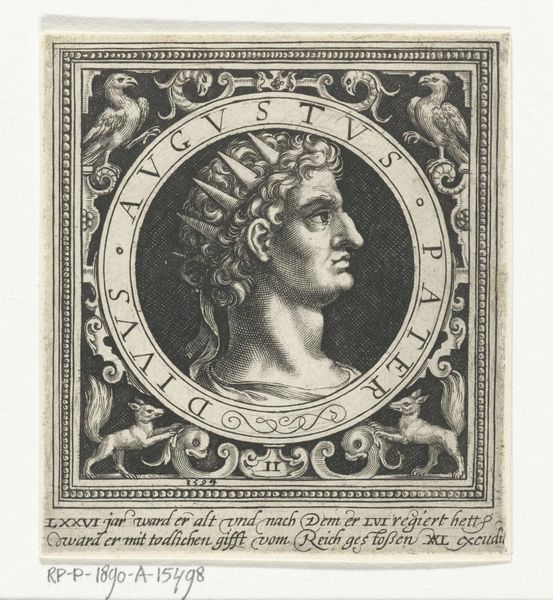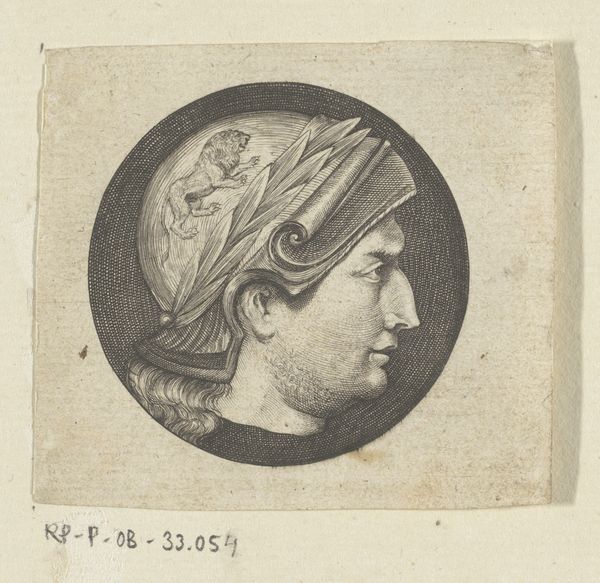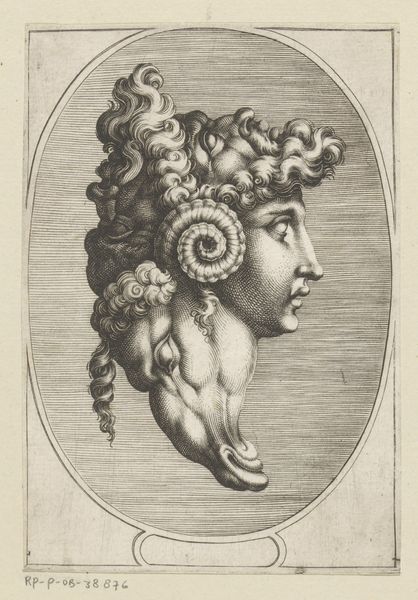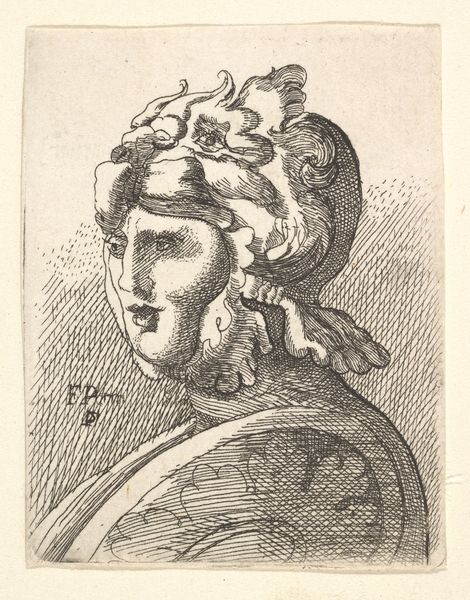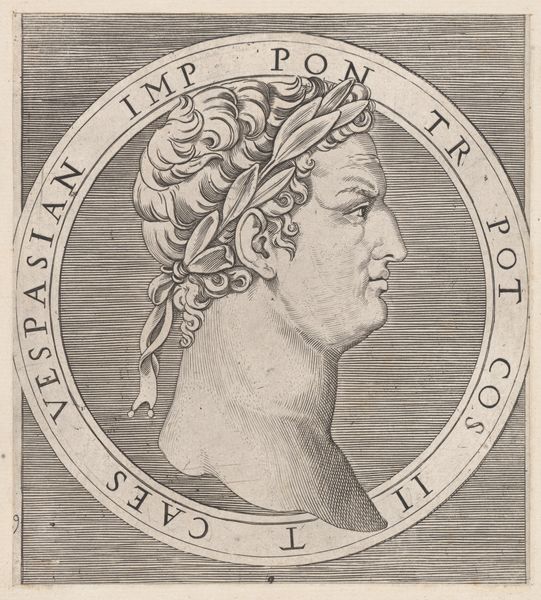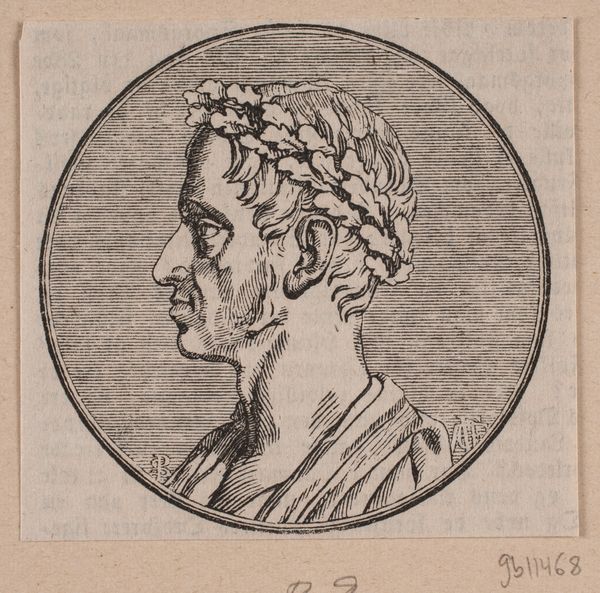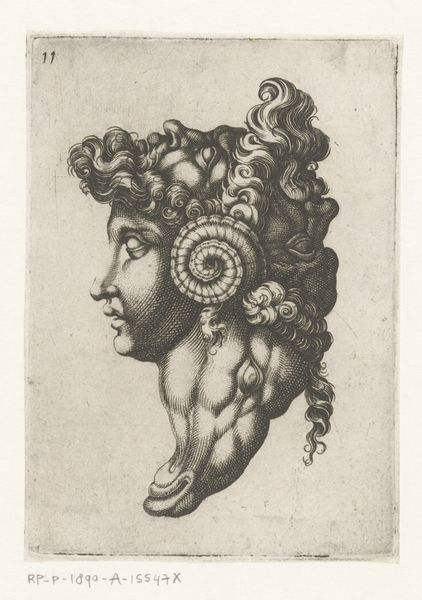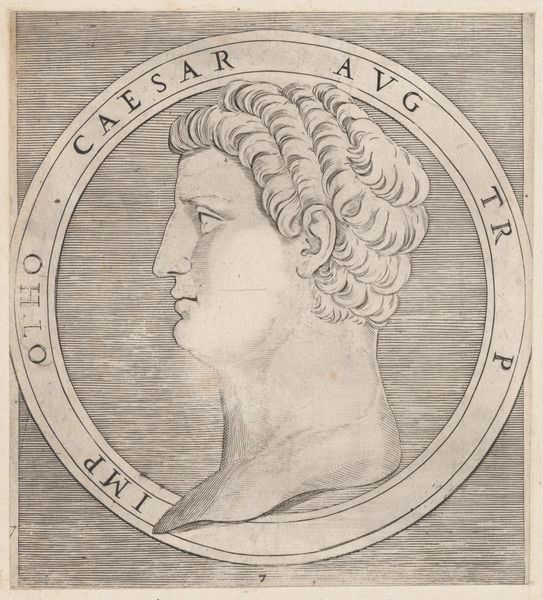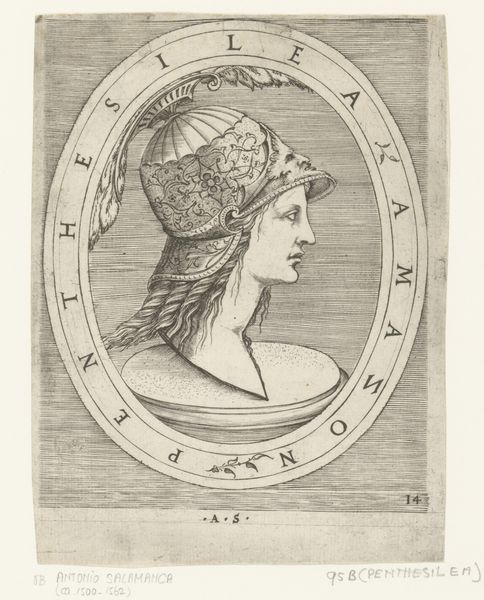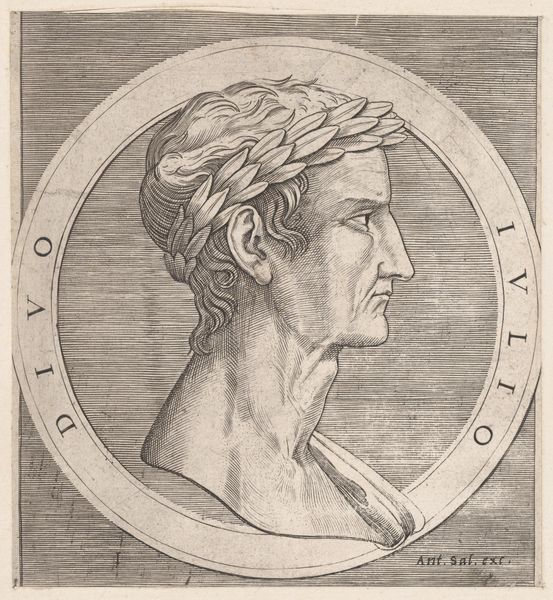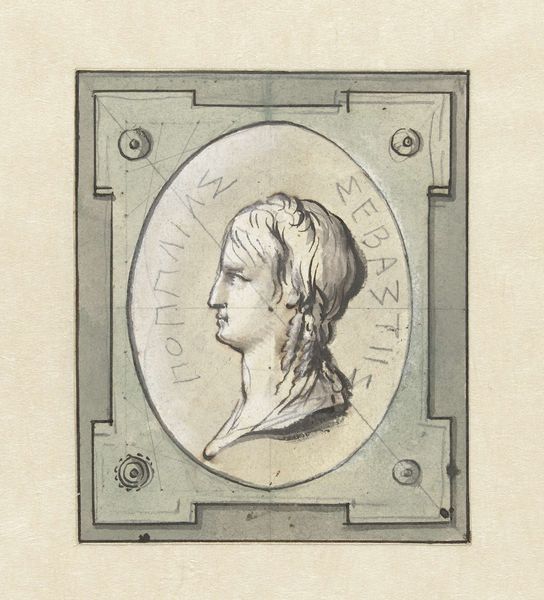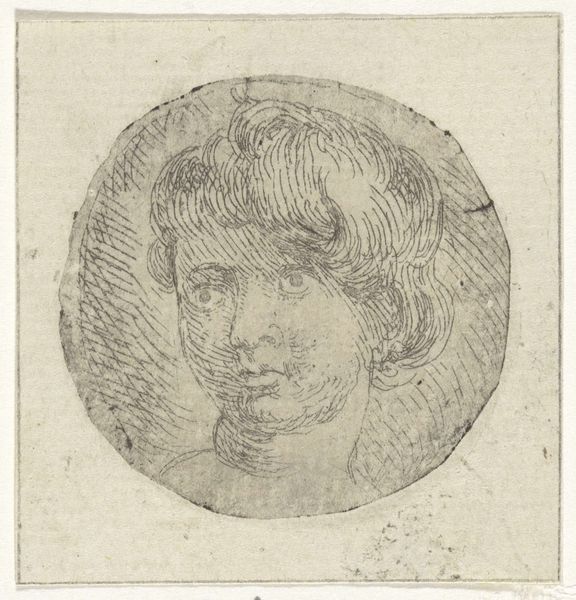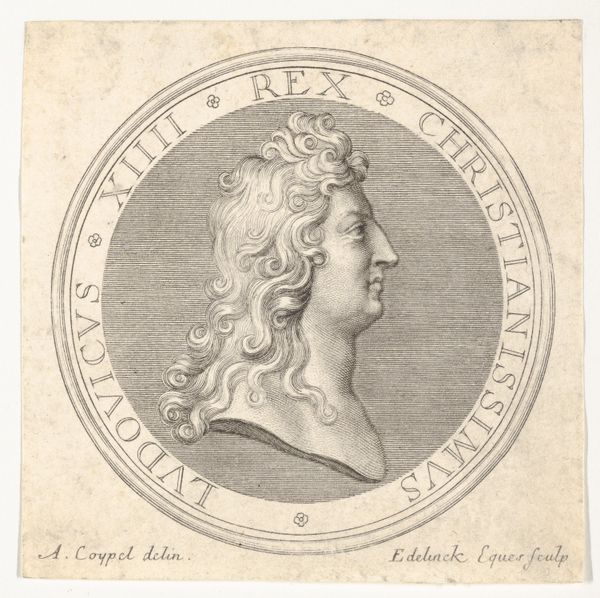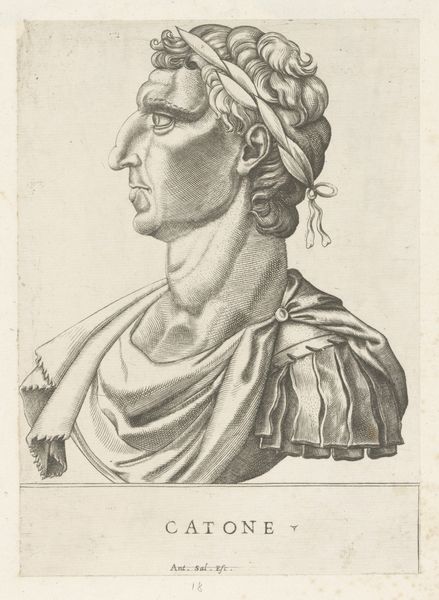
print, engraving
#
portrait
# print
#
11_renaissance
#
history-painting
#
italian-renaissance
#
engraving
Dimensions: height 153 mm, width 151 mm
Copyright: Rijks Museum: Open Domain
Curator: Here we have an engraving, “Portretbuste van Ninobe Amphionis,” dating from sometime between 1510 and 1562, currently residing here at the Rijksmuseum. Editor: There's a somber stillness about this portrait, a quiet dignity that draws me in. The crisp lines and stark contrasts add to that effect, making it both intimate and slightly removed. Curator: It is intriguing, isn’t it? The meticulous technique involved in creating engravings like this required rigorous skill. Consider the engraver's labour: the slow, deliberate carving into the metal plate, the intense pressure involved with each individual line. It reveals a whole world of workshops, craft guilds and skilled artisans of the Renaissance period. Editor: Absolutely. The social context can’t be ignored, either. Look at the subject—possibly a stylized or even allegorical representation given the classical name. What statements were being made in commissioning and displaying such a work? Who was being included in, or excluded from, the narrative it represents? Curator: The detail of the rendering indicates an intent to emulate high status. Perhaps this piece signals the patron’s humanistic aspirations or connection to classical learning, showcasing intellectual pedigree. Note the materiality, too. Printmaking enabled broader distribution of images and texts at a lower cost compared to, say, commissioned oil paintings. Editor: That shift in access alone reconfigured social power, though distribution was obviously still stratified along gender and class lines. This piece, I suspect, functioned in conversation with a wider representational economy – asserting cultural dominance. And what does this idealization signify about shifting notions of beauty, power, and identity during the Renaissance? It offers an early modern aesthetic framework, in other words, within a context rife with its own power dynamics. Curator: I concur. I was captivated by the precision of the rendering – all of those cross-hatched lines must have demanded an exceptional level of focus and precision. Editor: To be honest, I keep thinking about the contemporary relevance. How can images like these inform discussions about the historical construction of identity, of visibility, of knowledge itself? What dialogues do they open or foreclose, in light of decolonial and queer approaches to the archives? Curator: It makes you appreciate just how complex something which appears quite simple on first glance actually is! Editor: Precisely. This portrait engages the gaze, but what truly fascinates is considering what gazes are historically shaping its enduring narrative.
Comments
No comments
Be the first to comment and join the conversation on the ultimate creative platform.
